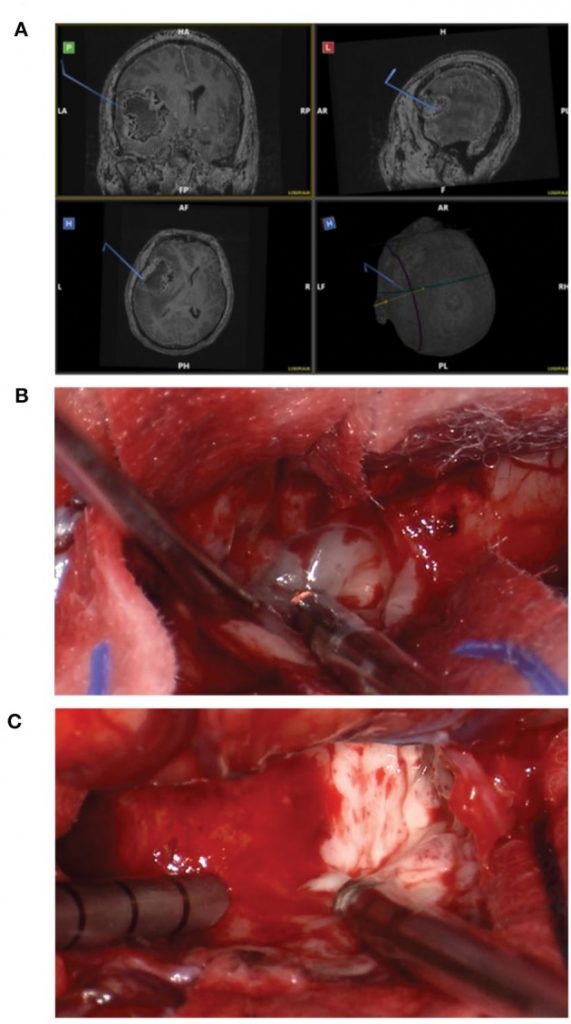Glioblastoma (GBM) is probably the most aggressive major mind tumor in adults. Designing efficient individualized therapies for GBM requires high quality recent tissue specimens, and a complete molecular profile of this extremely heterogenous neoplasm.
Novel neuro-surgical approaches, such because the automated resection NICO Myriad™ system, are more and more utilized by neurosurgeons to raised attain the invasive entrance of tumors. Nonetheless, no info exists on how harvesting GBM tissue utilizing this strategy could impression the translational analysis worth of the pattern.
Right here, we got down to characterize matched specimens from 15 sufferers, the place one tissue pattern was obtained utilizing conventional tumor de-bulking (herein known as “en bloc” pattern), and the opposite pattern was obtained utilizing the MyriadTM System (herein known as “Myriad” pattern).
We investigated the constancy of affected person derived xenografts (PDXs) for every pattern sort to the corresponding human tissues and evaluated the added worth of sequencing each samples for every affected person.
Matched en bloc and Myriad samples processed in parallel, had been subjected to the next assays: cell viability, self-renewal, in vivo tumorigenicity utilizing an orthotopic mannequin of glioma, genomic sequencing, and pharmacological testing utilizing PI3K-MTOR pathway inhibitors.
Our outcomes exhibit that major GBM cultures derived from matched specimens grew at related charges (correlation coefficient R = 0.72), generated equal variety of neurospheres, and had equal tumorigenic potential in vivo (mouse survival correlation coefficient R = 0.93). DNA Sequencing utilizing the Illumina tumor panel amplicons revealed over 70% concordance in non-synonymous mutations between matched human GBM specimens.
PDX genomic profiles had been additionally extremely concordant with the corresponding affected person tissues (>70%). RNA sequencing of paired GBM samples revealed distinctive genomic variants and differential gene expression between the en bloc and Myriad specimens, with the previous molecularly resembling the “tumor core” and the latter resembling the “invasive tumor entrance” signature.
Functionally, we present that primary-derived GBM cells-obtained after recent specimen’s dissociation-are extra successfully growth-inhibited by co-targeting non-overlapping mutations enriched in every pattern sort, suggesting that profiling each specimens extra adequately seize the molecular heterogeneity of GBM and should improve the design accuracy and efficacy of individualized therapies.

Patterns and biases in an Arctic herbarium specimen assortment: Implications for phenological analysis.
Herbarium specimens are more and more utilized in phenological research. Nonetheless, pure historical past collections can have biases that affect the evaluation of phenological occasions.
Arctic environments, the place remoteness and chilly local weather govern assortment logistics, could give rise to distinctive or pronounced biases.
We assessed the presence of biases in time, area, phenological occasions, collectors, taxonomy, and plant traits throughout Nunavut utilizing herbarium specimens accessioned on the Nationwide Herbarium of Canada (CAN).
We discovered durations of excessive and low assortment that corresponded to societal and institutional occasions; higher assortment density near frequent factors of air and sea entry; and preferences to gather crops on the flowering section and in peak flower, and to gather specific taxa, flower colors, progress varieties, and plant heights. One-quarter of collectors contributed 90% of the gathering.
Collections influenced by temporal and spatial biases have the potential to misrepresent phenology throughout area and time, whereas these formed by the pursuits of collectors or the tendency to favour specific phenological levels, taxa, and plant traits might give rise to imbalanced phenological comparisons. Underlying assortment patterns could differ amongst areas and establishments. To information phenological analyses, we advocate routine evaluation of any herbarium information set previous to its use.

